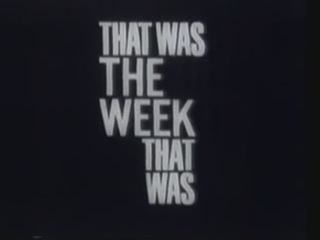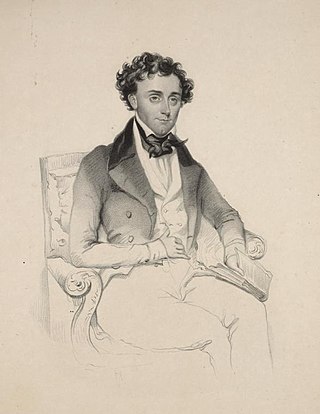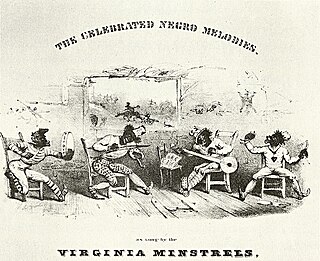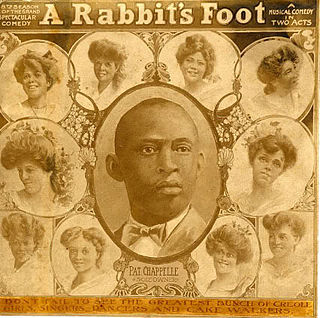
That Was the Week That Was, informally TWTWTW or TW3, was a satirical television comedy programme that aired on BBC Television in 1962 and 1963. It was devised, produced, and directed by Ned Sherrin and Jack Duncan, and presented by David Frost.

Blackface is the practice of performers, typically non-black performers, using burnt cork or theatrical makeup to portray a caricature of black people on stage or in entertainment.

Sir Lenworth George Henry is a British actor, comedian, singer, television presenter and writer.

Thomas Dartmouth Rice was an American performer and playwright who performed in blackface and used African American vernacular speech, song and dance to become one of the most popular minstrel show entertainers of his time. He is considered the "father of American minstrelsy". His act drew on aspects of African American culture and popularized them with a national, and later international, audience.

A comedian or comic is a person who seeks to entertain an audience by making them laugh. This might be through jokes or amusing situations, or acting foolish, or employing prop comedy. A comedian who addresses an audience directly is called a stand-up comedian.

The minstrel show, also called minstrelsy, was an American form of theater developed in the early 19th century. The shows were performed by mostly white actors wearing blackface makeup for the purpose of comically portraying racial stereotypes of African Americans. There were also some African-American performers and black-only minstrel groups that formed and toured. Minstrel shows stereotyped blacks as dimwitted, lazy, buffoonish, cowardly, superstitious, and happy-go-lucky. Each show consisted of comic skits, variety acts, dancing, and music performances that depicted people specifically of African descent.
George Mitchell was a Scottish musician, best known for having devised the long-running The Black and White Minstrel Show.

Christy's Minstrels, sometimes referred to as the Christy Minstrels, were a blackface group formed by Edwin Pearce Christy, a well-known ballad singer, in 1843, in Buffalo, New York. They were instrumental in the solidification of the minstrel show into a fixed three-act form. The troupe also invented or popularized "the line", the structured grouping that constituted the first act of the standardized three-act minstrel show, with the interlocutor in the middle and "Mr. Tambo" and "Mr. Bones" on the ends.

Thomas Dilward was an entertainer who appeared in blackface minstrel shows from 1853 until the early 1880s under the name Japanese Tommy. He was also sometimes billed as "The African 'Tom Thumb'" and the "African Dwarf Tommy". Dilward is one of only two known African-Americans to have performed with white minstrel companies before the American Civil War.
Sam Hague was a British blackface minstrel dancer and troupe owner. He was a pioneering white owner of a minstrel troupe composed of black members, and the success he saw with this troupe inspired many other white minstrel managers to tour with black companies.

William M. Whitlock was an American blackface performer. He began his career in entertainment doing blackface banjo routines in circuses and dime shows, and by 1843 he was well known in New York City. He is best known for his role in forming the original minstrel show troupe, the Virginia Minstrels.

John Walcott Cooper Jr. was an American ventriloquist, entertainer, and singer with the Southern Jubilee Singers. He was known as the "Black Napoleon of Ventriloquism" and also performed under the pseudonym Hezekiah Jones. Over the course of his lifetime Cooper was a member of the Negro Actors Guild of America, the Colored Vaudeville Benevolent Association, and the International Brotherhood of Ventriloquists.

Francis Marion Brower was an American blackface performer active in the mid-19th century. Brower began performing blackface song-and-dance acts in circuses and variety shows when he was 13. He eventually introduced the bones to his act, helping to popularize it as a blackface instrument. Brower teamed with various other performers, forming his longest association with banjoist Dan Emmett beginning in 1841. Brower earned a reputation as a gifted dancer. In 1842, Brower and Emmett moved to New York City. They were out of work by January 1843, when they teamed up with Billy Whitlock and Richard Pelham to form the Virginia Minstrels. The group was the first to perform a full minstrel show as a complete evening's entertainment. Brower pioneered the role of the endman.

George Walker was an American vaudevillian, actor, and producer. In 1893, in San Francisco, Walker at the age of 20 met Bert Williams, who was a year younger. The two young men became performing partners. Walker and Williams appeared in The Gold Bug (1895), Clorindy (1898), The Policy Player (1899), Sons of Ham (1900), In Dahomey (1903), Abyssinia (1906), and Bandanna Land (1907). Walker married dancer Ada Overton, who later also was a choreographer.
Christmas Night with the Stars is a television show broadcast each Christmas night by the BBC from 1958 to 1972. The show was hosted each year by a leading star of BBC TV and featured specially-made short seasonal editions of the previous year's most successful BBC sitcoms and light entertainment programmes. Most of the variety segments no longer exist in accordance with the BBC's practice of discarding programmes at the time.

George Henry Elliott was a British music hall singer and dancer. Known as "The Chocolate Coloured Coon", he performed with a painted brown face and dressed entirely in white: white top hat, white tail-coat which came down well below the knees, white gloves, white tie or cravat, white trousers, white shoes and white cane.
John Boulter is a British tenor best known for his appearances as a soloist in the BBC's long-running variety series The Black and White Minstrel Show. Along with bass Tony Mercer and baritone Dai Francis, Boulter was one of the show's three front men.

Black Vaudeville is a term that specifically describes Vaudeville-era African American entertainers and the milieus of dance, music, and theatrical performances they created. Spanning the years between the 1880s and early 1930s, these acts not only brought elements and influences unique to American black culture directly to African Americans but ultimately spread them beyond to both white American society and Europe.

George Walker and Bert Williams were two of the most renowned figures of the minstrel era. However the two did not start their careers together. Walker was born in 1873 in Lawrence, Kansas. His onstage career began at an early age as he toured in black minstrel shows as a child. George Walker became a better known stage performer as he toured the country with a traveling group of minstrels. George Walker was a "dandy", a performer notorious for performing without makeup due to his dark skin. Most vaudeville actors were white at this time and often wore blackface. As Walker and his group traveled the country, Bert Williams was touring with his group, named Martin and Selig's Mastodon Minstrels. While performing with the Minstrels, African American song-and-dance man George Walker and Bert Williams met in San Francisco in 1893. George Walker married Ada Overton in 1899. Ada Overton Walker was known as one of the first professional African American choreographers. Prior to starring in performances with Walker and Williams, Overton wowed audiences across the country for her 1900 musical performance in the show Son of Ham. After falling ill during the tour of Bandana Land in 1909, George Walker returned to Lawrence, Kansas where he died on January 8, 1911. He was 38.















